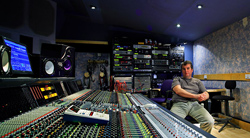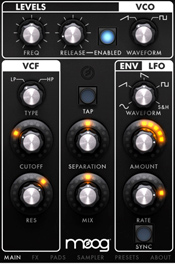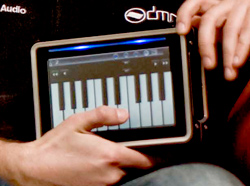 A recent Facebook discussion on the state of popular music making threw out an interesting benchmark – the ratio between ‘shit’ and ‘the shit’. Let’s call it S/TS. If that’s reminiscent of signal-to-noise (S/N), it’s no accident.
A recent Facebook discussion on the state of popular music making threw out an interesting benchmark – the ratio between ‘shit’ and ‘the shit’. Let’s call it S/TS. If that’s reminiscent of signal-to-noise (S/N), it’s no accident.
Much of the blame for the swing towards the ‘S’ end of the scale was assigned to major record labels. The rest came technology’s way.
The temperature was high, and for good reason. For some contributors, the music business lost sight of music values a long time ago. There was a very strong case for taking a few mics and a location recorder in search of music made with wood, hide and gut.
Remake, remodel
Much of the shape of today’s mainstream recording has been shaped from the rubble of ‘traditional’ recording by the tools that were used to bring them down. A firestorm of cheap black boxes and computers did a fine job of demolishing large-format analogue mixing consoles, tape recorders full of relays, delicate microphones and the acoustically perfect walls that contained them.

Paul Madden's Intimate Studios
Intoxicated by the mix of creative and destructive power of new technologies, a new generation of music makers wrested control from the old school. But like torching a library, the damage reached beyond the material. Experience and expertise also fell by the wayside...
For a talented few, everthing fell into place and their music explored new possibilities. For the remainder, it was going to take time.
And it may already be too late for them, because there’s a new squall brewing.
With successive generations of technology, the title of ‘music producer’ is being redefined. In the early days of the recording industry, (highly skilled, mysterious) producers worked with performers on songs and arrangements on a record company’s behalf. Operating the studio was the job of an engineer. Then the roles converged... and found themselves on an intercept course with that of the artist.
It was empowering. It was seductive. It was a problem. And now there’s more to come.
If those black boxes and computers were explosive in the 1980s, the smartphones, tablets and apps appearing now could be armour piercing. And if they brought the entry fee to the (highly skilled, mysterious) music producers’ club down from thousands to hundreds, apps pull it down into single figures, if any figures at all.
There are presently reckoned to be around 189m Apple devices in circulation that are able to play games. This makes them equally able to bestow the title of music producer on their users.
Certainly, there are different manifestations of music app. Some simply deal with online radio, track identification and MP3 playout. But others promise mastery of all known instruments to the uncoordinated and Abbey Road recording to the uninformed.
 Take a look at the likes of, Looptastic, Bleep!Box, TouchOsc, RjDj RJ1000 Studio – even Moog's Filtatron – and you will get a taste of what’s going on. It’s easy to see how electronic instruments lend themselves to ‘appification’, but you have to frown over the virtual strings of Guitar and iShred and the plumbing of iBone (trombone), as well as more off-the-wall apps like Bowls (Tibetan singing bowls) and Ocarina (!).
Take a look at the likes of, Looptastic, Bleep!Box, TouchOsc, RjDj RJ1000 Studio – even Moog's Filtatron – and you will get a taste of what’s going on. It’s easy to see how electronic instruments lend themselves to ‘appification’, but you have to frown over the virtual strings of Guitar and iShred and the plumbing of iBone (trombone), as well as more off-the-wall apps like Bowls (Tibetan singing bowls) and Ocarina (!).
Maybe it’s not all bad, though – one user regarded Drum Kit Pro as so annoying that he was going to buy a ‘proper’ drum kit. That’s some impetus from a $1 app.
The new wave lapping at the foundations of professional audio has also washed in the HP Envy Beats Edition laptop. A very stylish version of one of HP’s best spec’d machines, this incorporates Beats Audio, ‘a unique, high-performance technology developed by HP and Beats by Dr Dre, to provide the optimal sound experience – the way the artist intended it’.
The computer press seem happy to lap this up and relay HP’s ‘optimised, studio-quality sound’, ‘optimal sound experience’ marketing as gospel, along with its implications of professional audio performance. Reviewers agree that its sound is an improvement over the average notebook PC. But the audio processing defines it as a recreational machine, and it lacks analogue audio inputs and any professional digital I/O.
And limited I/O is also what’s helping to hold smartphone music back – for now. Interfaces are already beginning to appear, however. Line 6 has an iPad/iPhone Midi interface in its Midi Mobilizer, while the Alesis iO Dock will soon add XLR inputs (with phantom power), quarter-inch line and headphone outputs, Midi/USB control ports and a footswitch to an iPad.
Going pro
There are pro audio apps, of course. But rather than make music, these turn a mobile device into an equipment controller. Among them are, Allen & Heath’s iLive controllers, SSL’s X-Patch and Gravity Web Mobile, Lawo’s Remote Nova router controller, HK Audio’s Elements loudspeaker controller and AKG’s wireless systems controller.
Taking the app model a step further is Symetrix’s approach to its Jupiter series of audio processors. A convergence of selective access to control parameters (frequently used in installed sound) and an app-style library, this uses proprietary hardware that allows DSP to be instantly configured for specific applications.

Also designing its own apps and hardware, Dark Matter Audio promises that its DMA1 box can be ‘anything you want it to be – guitar effects processor, high-quality studio tool or performance instrument’. Inside the DMA1 is hardware and processing to support digital multitrack recording, multi-FX, an MP3/4 player, a Midi interface and support for mixing 5.1 surround.
‘We’ve endeavoured to create a paradigm shift in the world of audio production and performance,’ says Dark Matter Audio CEO, Jon Stuart.
If the Symetrix/Dark Matter model is taken up, we could find ourselves with more boxes full of processing and I/O ready to take on different roles as required. And there are additional benefits…
For a start, their adaptability will mean that you will never be looking at a redundant compressor wishing it was a reverb unit or a monitor matrix. And they need not be replaced by newer, more capable models, but reassigned elsewhere running a different app.
The future of pro audio?

